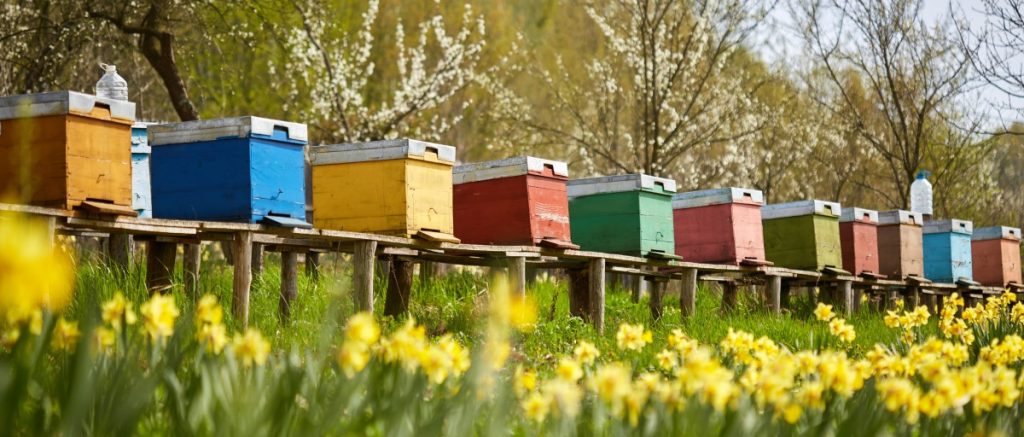Are you wondering how to get into beekeeping for profit?
The best way is to start slowly with a few hives and learn all you can about beekeeping.
Don’t increase your beehives too quickly. Instead, have fun, enjoy your bees and take your time learning the craft of beekeeping.
Once you have some experience and understand how to manage your bees, you are ready to become a successful beekeeping business owner.
In this article, we explore different ways to make money with beekeeping and how much you can expect to make.
What is Beekeeping?
Beekeeping, also called apiculture, is the maintenance and management of honey bee colonies, usually using man-made hives.
Many people get into beekeeping because they are intrigued by bees and looking for a hobby that will benefit their garden and the environment.
Then, of course, others are after the delicious honey and other high-demand bee products that you can get from your bees.
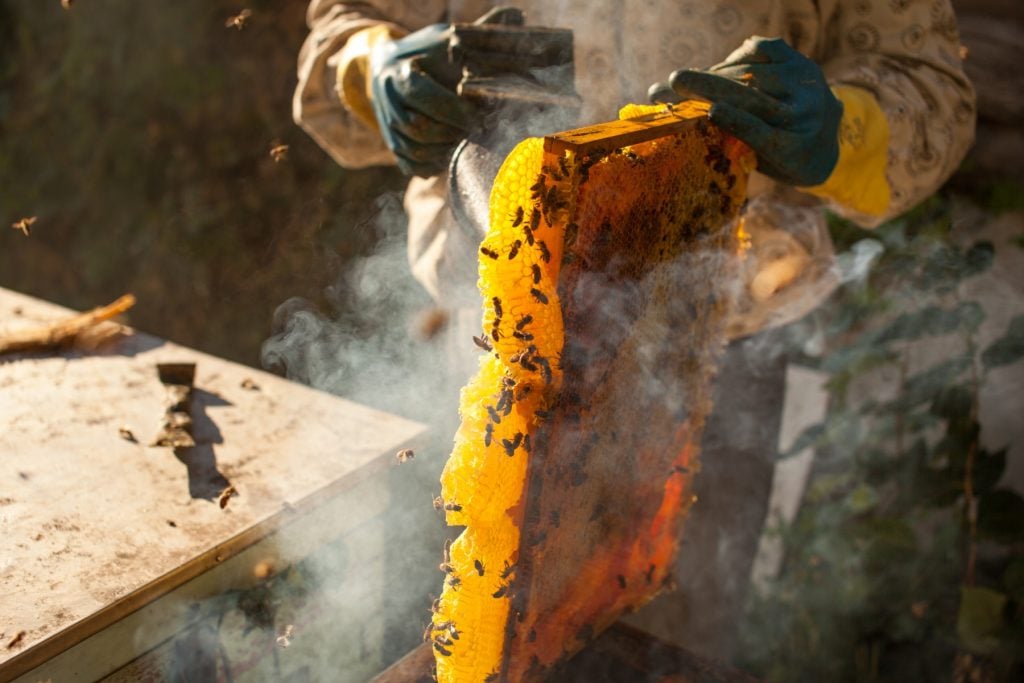
What Does a Beekeeper Do?
A beekeeper is involved in every aspect of raising, propagating and generating products from bees.
A beekeeper needs to ensure their beehives remain healthy and productive.
To do this, a beekeeper needs to keep records and carefully monitor the welfare and numbers of their bees.
They also need to maintain the hives and harvest honey and other bee products.
Why Beekeeping is Ideal For Homesteaders
Many homesteaders are constantly looking for ways to be more self-sufficient, and beekeeping is an ideal activity to take them a step further.
Keeping honey bees not only provides delicious honey for home use. It also increases vegetable yields, benefits the environment and has the potential to generate additional income.
Setting up a small beehive or two does not require a lot of money or space, and it only takes around half an hour a week to manage and maintain two hives.
If you’re a backyard homesteader or farmer looking for a worthwhile project, consider beekeeping for fun and profit.
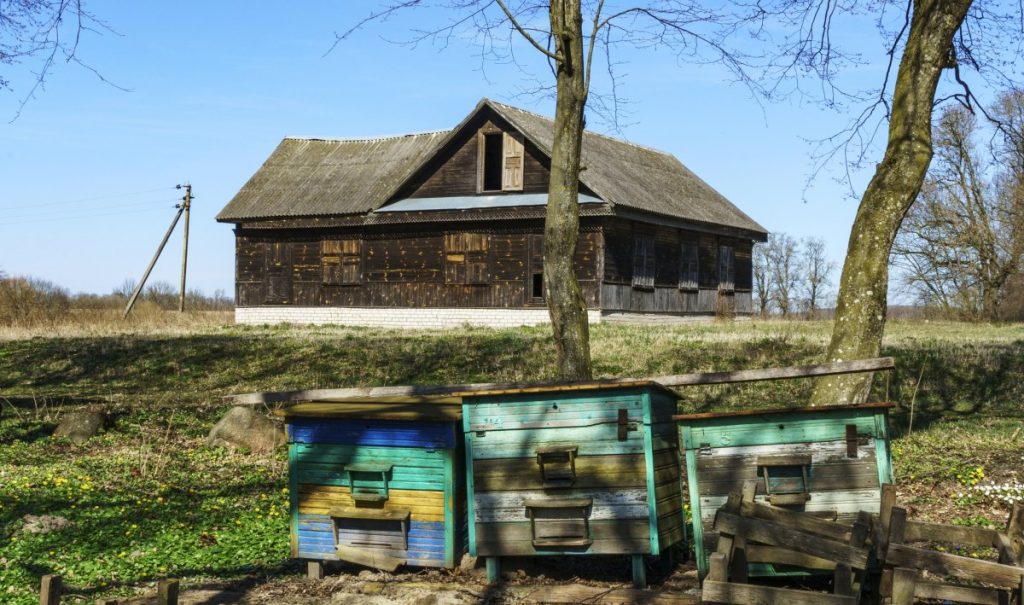
7 Ways to Make Money Beekeeping
Beekeeping can be a fun and rewarding hobby that provides natural honey and helps with your plant pollination.
However, once hooked, many backyard beekeepers wonder, “how does honey make money?” and “can beekeeping be profitable?”
Beekeeping can be profitable, and while selling honey can make money, this is not the only way to profit from beekeeping.
Here are some of the ways that beekeepers make money.
1. Bee Products
The first way you can make money is by selling the things that bees produce.
Although most people immediately think of honey, bees produce several other substances that can be harvested and sold.
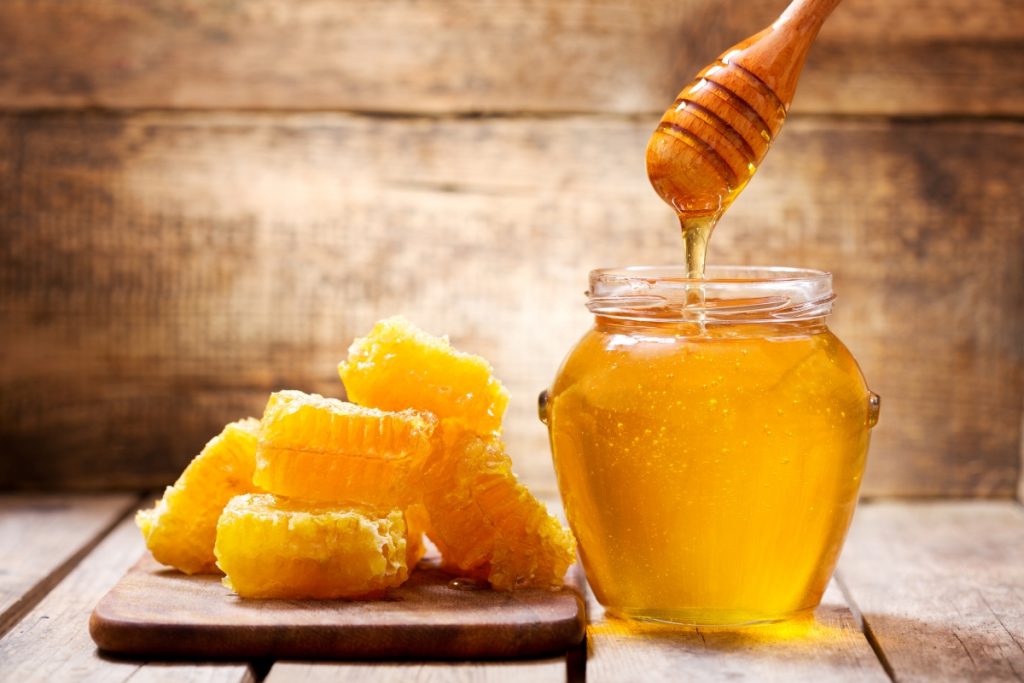
- Honey
There is always a demand for natural, locally produced raw honey, and the production costs are low.
If you have specific nectar sources near your hive, you could package, market and sell honey with unique flavors.
You can charge more for natural honey than the mass-produced product in grocery stores and could charge up to $10 per lb (£15 per kg).
Bear in mind you probably won’t harvest honey in the first year as your bee colony needs time to get established before they produce excess honey.
The amount of honey a hive produces varies from year to year. It’s affected by the weather, nectar availability and health of the colony.

- Pollen
Bees collect pollen from flowers and bring it back to the hive. It’s their primary source of protein, and they need pollen to feed the colony.
Pollen is also a health supplement for humans, and as only small amounts are available, it has a higher market value than honey and usually sells for $3 to $5 an ounce (£2 to £3,60 for 30 grams).
A beekeeper needs to install a pollen trap at the entrance to the hive to harvest and sell pollen.
Pollen harvesting can only be done for short time periods, a few days a week, to ensure you leave enough pollen for the bees.
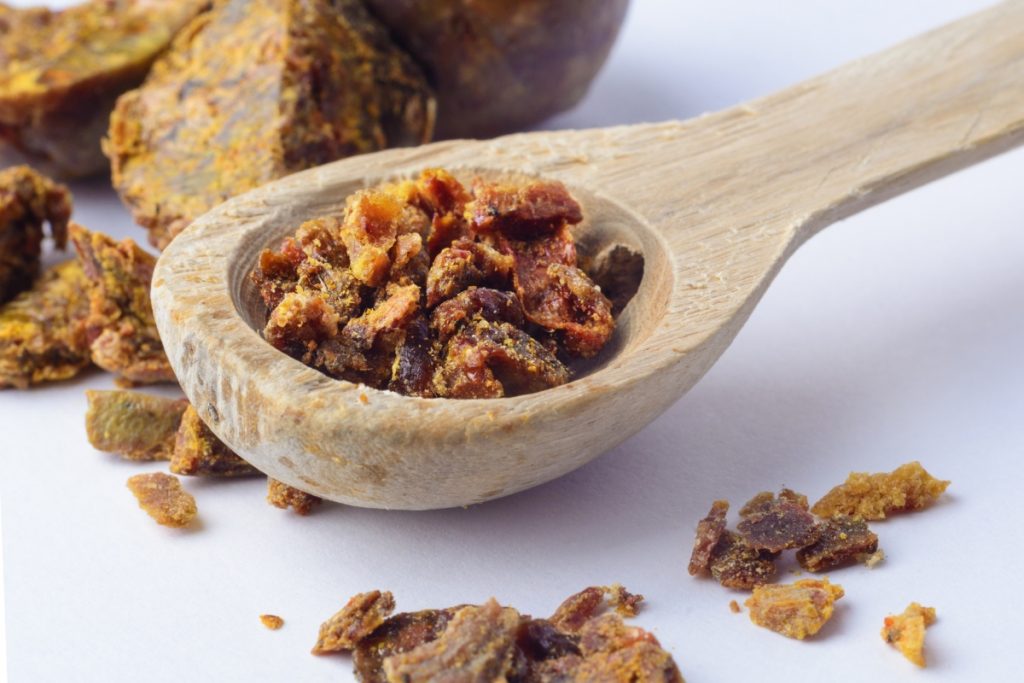
- Propolis
Bees use propolis, a sticky resin-like substance, to seal cracks and disinfect the hive.
It is also a human health supplement in demand for its medicinal uses and more valuable than pollen. A beekeeper can sell propolis for $6 to $8 an ounce (£4 to £6 for 30 grams).
Propolis is harvested from the hive using a propolis trap, and although you only get small amounts, a healthy colony will provide a steady supply.
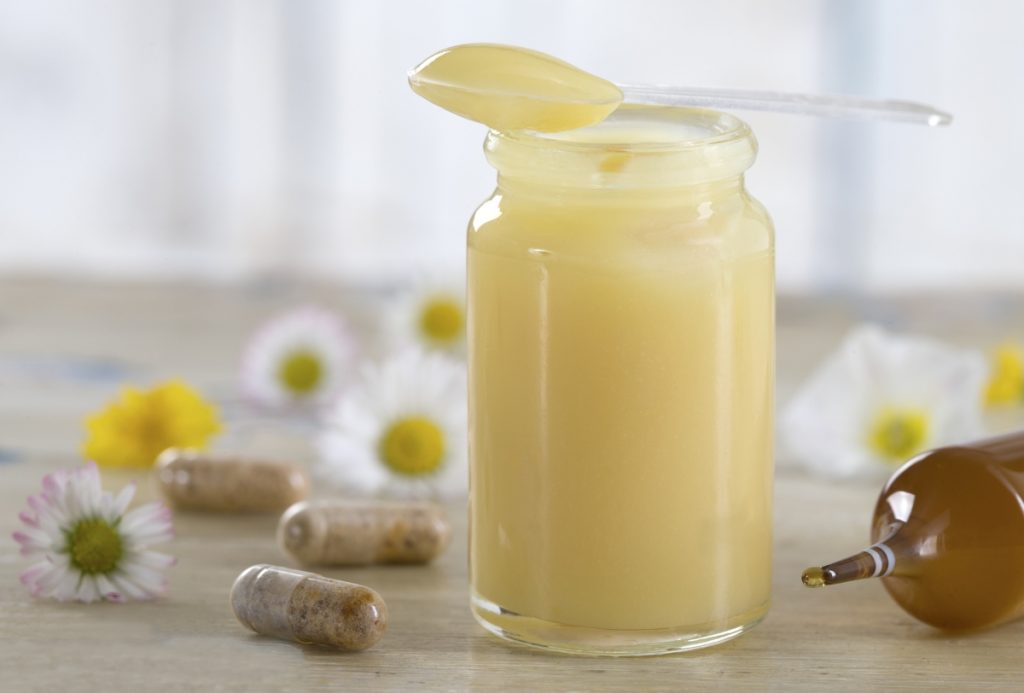
- Royal Jelly
Royal Jelly or bee milk is a white, protein-rich excretion that comes from the glands of worker bees.
All bee larvae are fed royal jelly for their first three days of life. But, larvae chosen to become queens are given royal jelly throughout their development, and queen bees eat royal jelly their entire life.
Royal jelly is precious as so little is made, and harvesting is difficult.
For centuries it has been used for its health benefits and can be sold for $6 to $8 an ounce (£4 to £6 for 30 grams).
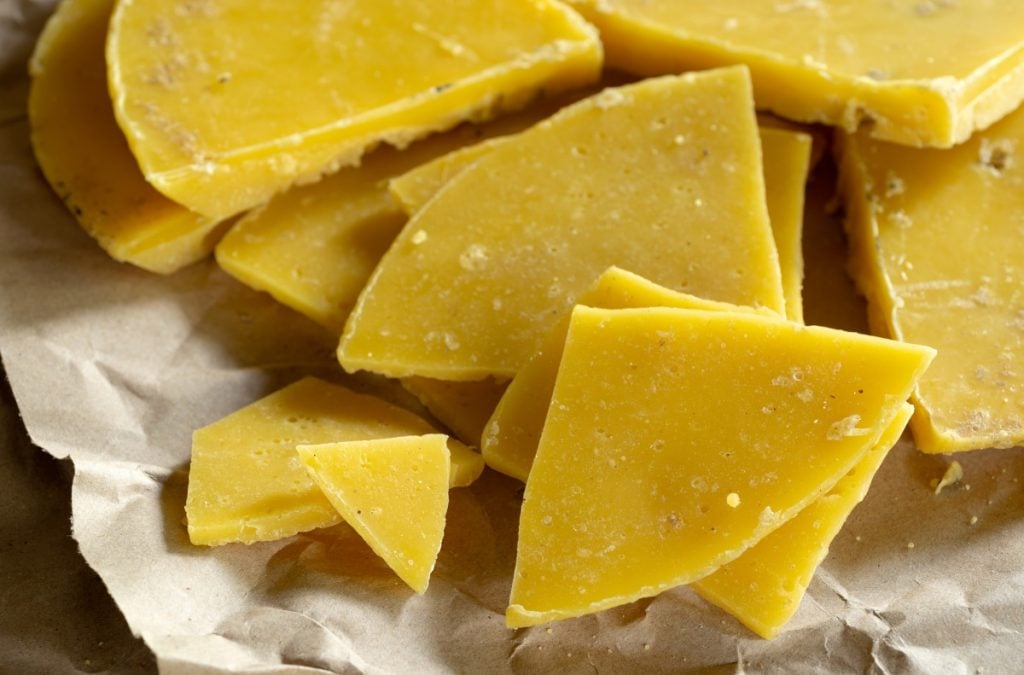
- Beeswax
Beeswax is another popular bee product that beekeepers can harvest and sell.
You can sell beeswax as is or try your hand at making value-added beeswax products like lip balm or candles.
How much you get for your beeswax will depend on your location, but around $10 an lb (£15 per kg) is a common retail price.
If you make your own beeswax candles, they can easily sell for over $20 (£15), and there’s a thriving market for them.
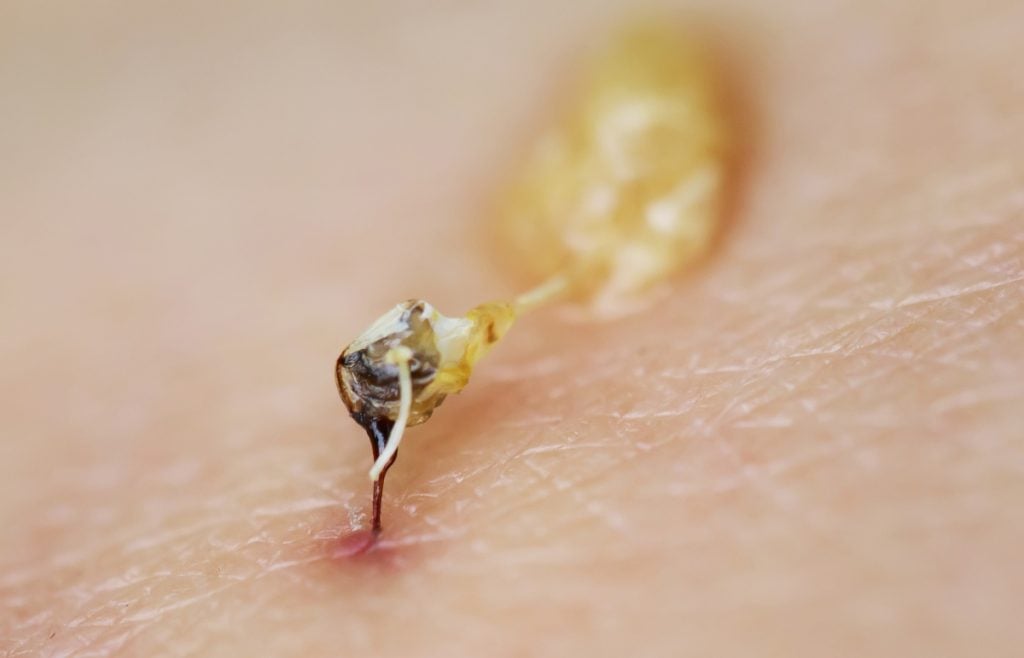
- Bee Venom
The use of bee venom to treat arthritis and other conditions is relatively new and still being studied.
Known as bee sting therapy, it is a form of apitherapy that involves bees stinging specific areas of the body.
It’s an exciting new area of study, and as the science develops, it may create a lucrative new market for beekeepers.
If you are interested in offering bee sting therapy, you need to consider the liability issues before you begin.
Many beekeepers have a waiver that they ask the venom users to sign before they administer any treatment.
2. Pollination Services
Renting your bees out for pollination services can be very profitable.
Some beekeepers earn a full-time income from pollination services alone and manage hundreds of beehives at a time for large farms.
To do this, they require lots of equipment, beehives and experience.
However, smaller farms and horticulture businesses often only need a few hives to meet their pollination requirements, making it possible for smaller bee farmers and part-time beekeepers to offer pollination services.
Depending on your area and the season, the price you can charge when renting out bees for pollination services varies.
In general, farmers will pay up to $150 (£108) for pollination services.

3. Beekeeping Equipment
If you are handy with a saw and drill, there are several products you could build and offer to other beekeepers.
There is a demand for products that don’t come with the original hive, such as slatter racks, bee feeders, entrance reducers, bee escapes and many more.
Market your products through local beekeeper associations, and if you have a high-quality product and happy clients, you can create a profitable side business.
4. Beekeeping Education and Advisory Services
As you gain more experience and become a seasoned beekeeper, you can share your knowledge and generate income by offering training and advisory services to new beekeepers.
The first year of beekeeping can be overwhelming as there is a great deal to learn.
Having someone on hand to provide training and give advice when problems arise will help them succeed.
It’s possible to offer classes and advisory services even if you have a full-time job.
Schedule beekeeping classes and demonstrations for weekends, and clients who want your advisory services should only need a couple of hours with you a month.
Once you have done an initial client visit, you can also provide a lot of advice and assistance remotely.

5. Bee Removal
Experienced beekeepers can also offer local bee removal services. You can profit and increase the number of hives you have with no cost for the bees.
Be removal costs an average of $450 (£325) but can range from $150 to $1500 (£108 to £1082) or more if the bees are inside a structure and difficult to access.
6. Apiary Maintenance
Experienced beekeepers can make a profit by maintaining beehives for others for a fee.
There are many instances where horticulturists or farmers want beehives to aid the pollination of their crops but don’t have the knowledge or time to manage them properly.
They are more than happy to pay a beekeeper to look after their bees and maintain the hives.
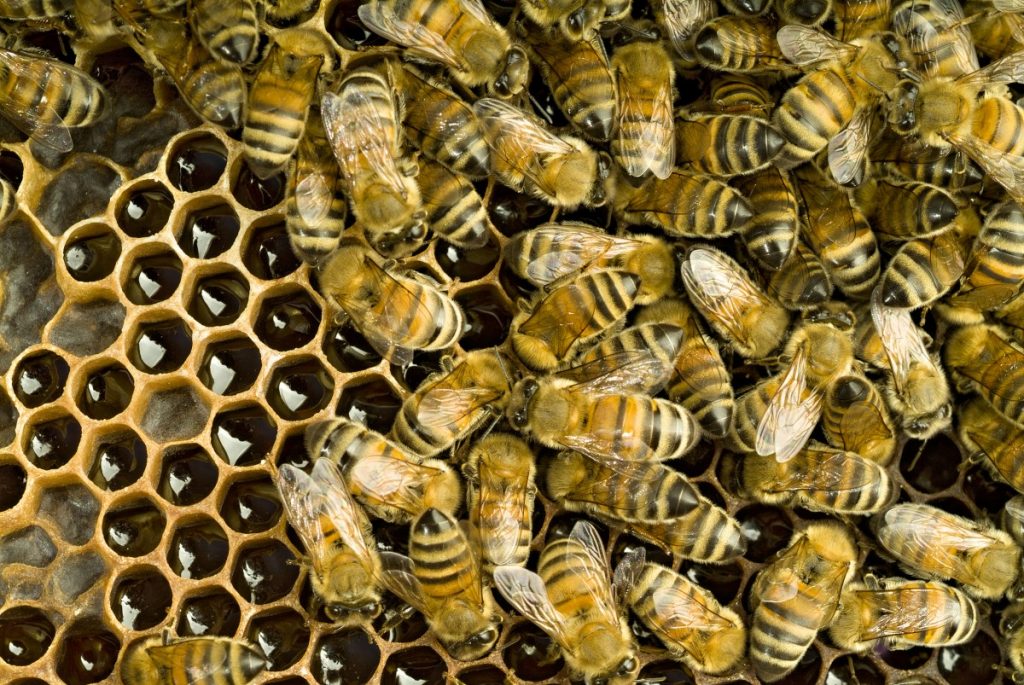
7. Selling Bees
Selling bees is a great way to become a profitable beekeeper.
Using your hives, you can produce replacement bees and starter hives and replacement bees for other beekeepers.
It takes a while before you can do this, as you need the knowledge and bee numbers, but then it can be very profitable.
Here are some of the ways you can sell bees.
- Bee packages: A bee package with one queen and 3 pounds of bees sells for about $175 (£126).
- Nucleus colonies: A nucleus or nuc is several honeycombs in a box with bees and a queen. The existing honeycomb gives the bees a head start when installed into a new hive. A five-frame nuc with a queen sells for $200 to $250 (£144 to £180).
- Established beehives: These sell for between $250 and $350 (£180 and £252)
How Much Money Can You Make From Beekeeping?
How much money you make from beekeeping depends on how many hives you have and how much honey you harvest.
But there are even more factors that can affect your profit, including how much time you have available, the weather conditions, your location and your beekeeping knowledge.
You will need to experiment and find which ways to earn money beekeeping work best for you.
You will more than likely have to diversify and use a combination of different bee products and services to earn a good income.
As you gain experience and knowledge, more money-making opportunities will become available, and you could even get full-time employment as a beekeeper on a bee farm.
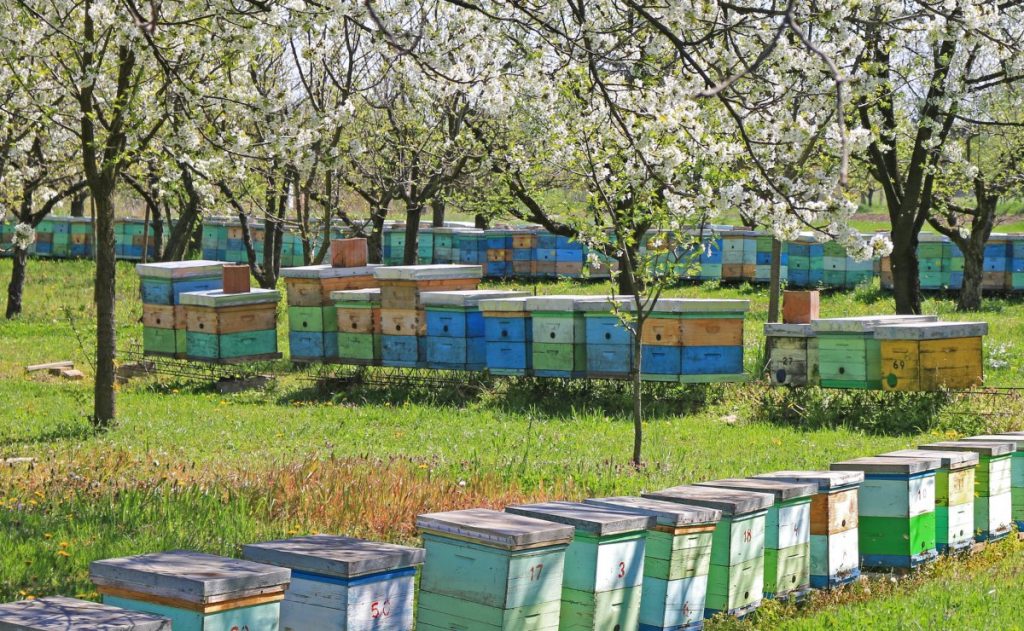
How Much Money do Beekeepers Make a Year?
There are two ways of making money as a beekeeper. Finding employment as a beekeeper is the first, and the other is by becoming a bee farmer and obtaining colonies, raising bees and harvesting honey yourself.
According to the Economic Research Institute, the average salary for a beekeeper in the United States is $47,899 (£34,552) a year and $23 (£16.60) an hour.
A beekeeper’s salary may range from $35,523 to $58,231 (£25,624 to £42,000), depending on experience and location.
How much beekeepers make a year with their hives varies considerably and depends on their goals.
Below are answers to some frequently asked questions that will give you a good idea of what you can expect to make from beekeeping.
What is The Potential Profit Per Hive?
Realistically, you can get anywhere from 30 to 60 lb (14 to 27 kg) of honey per hive a year. However, a strong, healthy colony may produce up to 100 lbs (45 kgs) of honey per year.
Natural, local honey sells anywhere from $5 to $15 (£3.60 to £11), depending on your location and the quality of the honey. It’s not unreasonable to expect to sell your honey for around $10 per lb. (£15 per kg)
Using these figures, you would make $300 to $600 (£216 to £432) per hive a year selling honey.
You can increase the income per hive by selling other bee products and the bees themselves.
To work out your profit per hive, you will need to deduct any maintenance expenses as well as harvesting, packaging and marketing costs.
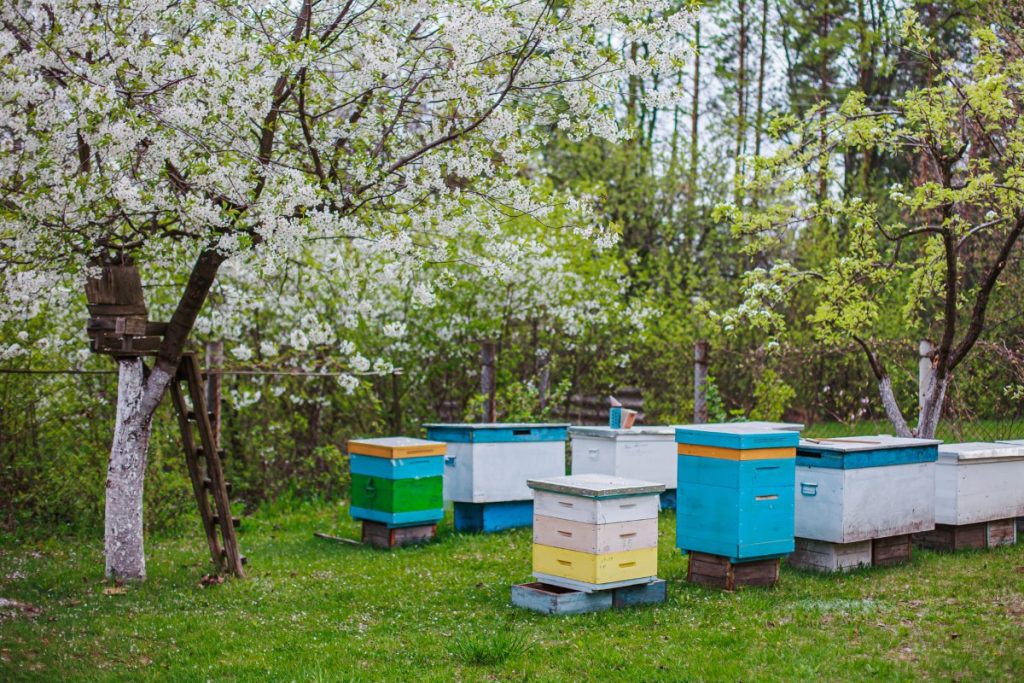
How Many Bee Hives Make a Living?
If you are a beginner beekeeper who wants to make beekeeping your full-time income, you are going to have to work out the answer to this question for yourself.
Not everyone has similar income requirements or beekeeping goals, and the number of beehives required to make a living varies drastically from one beekeeper to the next.
Some beekeepers only need a few hives to make a living as they are good marketers and understand the retail market well.
Many experienced beekeepers will only have a few hives but make money selling beekeeping equipment and providing training.
Other beekeepers focus exclusively on raising and selling bees and create profitable businesses this way.
If you aim to profit solely from honey production, you will need lots of beehives, equipment, land and bee management.
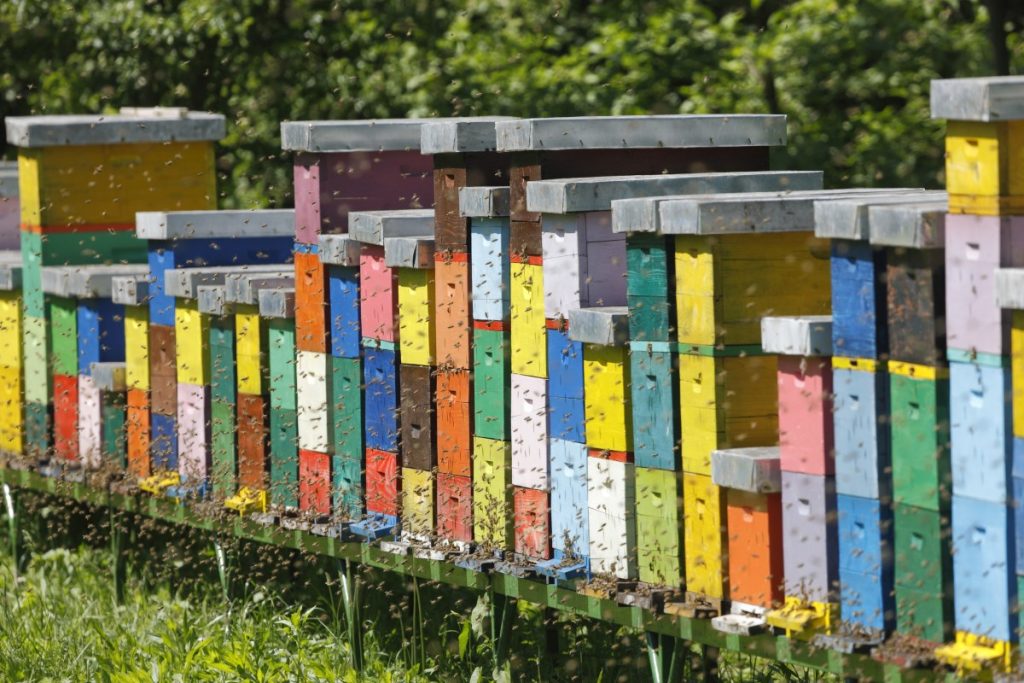
How Many Beehives Can One Person Manage?
Now that you have an idea of the profit you can make per hive, let’s look at how many beehives one person can manage.
The answer varies and depends on several factors, including time, experience, hive location and your goals.
If you focus solely on raising bees for honey production, it’s difficult for one person to manage numerous hives.
Honey production is more time-consuming and requires more equipment than raising and selling bees.
The following figures should give you some idea of what is possible when beekeeping for profit.
As a part-time hobby, one person can manage up to 25 hives without careful planning or time management.
An experienced beekeeper, focusing on raising honey bees to sell, can manage anywhere from 100 to 150 beehives and still have a full-time job.
If you are maintaining bees for others or renting your bees for pollinating services, you can also manage a significant number of hives part-time.
Full-time beekeepers can manage anywhere from 400 to 600 bee colonies but will require seasonal workers to help harvest honey.
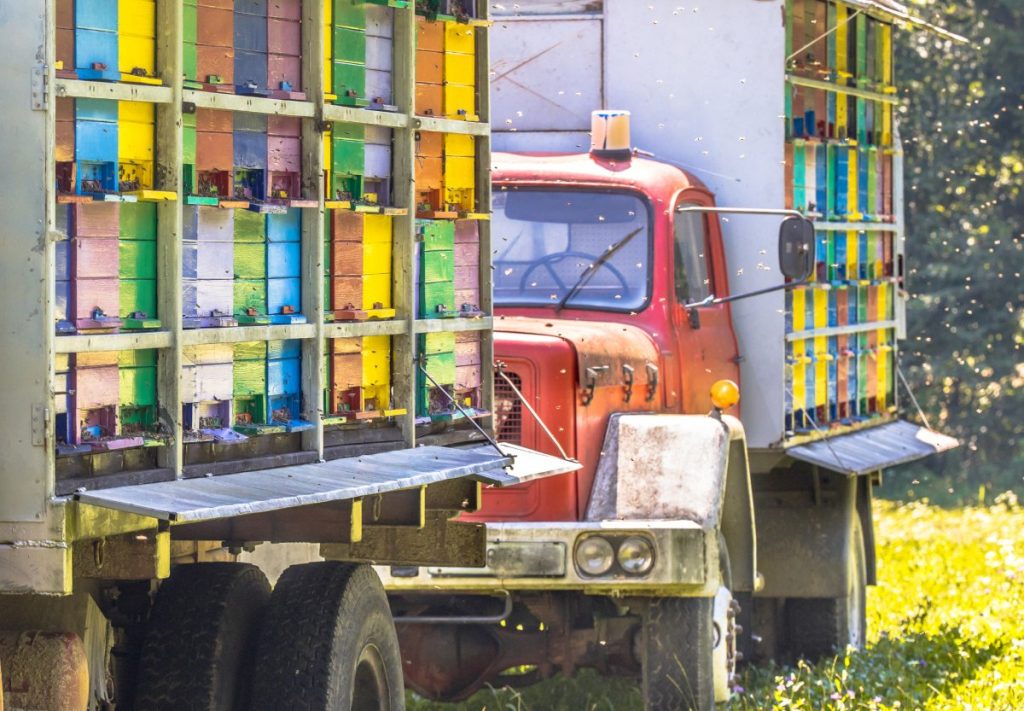
Is Commercial Beekeeping Profitable?
Beekeepers with 300 or more hives are considered commercial beekeepers, and their beekeeping businesses can be very profitable.
Many commercial beekeepers migrate their colonies to provide pollination services to farmers while simultaneously providing their bees with abundant nectar sources for honey production.
According to the Grand View Research 2021 Honey Market Analysis, the global honey market size was USD 9.21 billion in 2020 and is expected to grow at a compound annual growth rate of 8.2%.
The high demand for nutritious food products is driving the growth as people become more aware of the benefits of maintaining healthy lifestyles.
For the same reason, natural, raw honey sells for anywhere up to $20 an lb (£30 a kg).
Beekeeping Costs
When you start beekeeping for profit, approach it in the same way as any other business venture.
One of the first things you need to consider is the cost of beekeeping.
Beekeeping has several costs, including the initial costs to create a hive, ongoing maintenance, packaging and marketing costs.
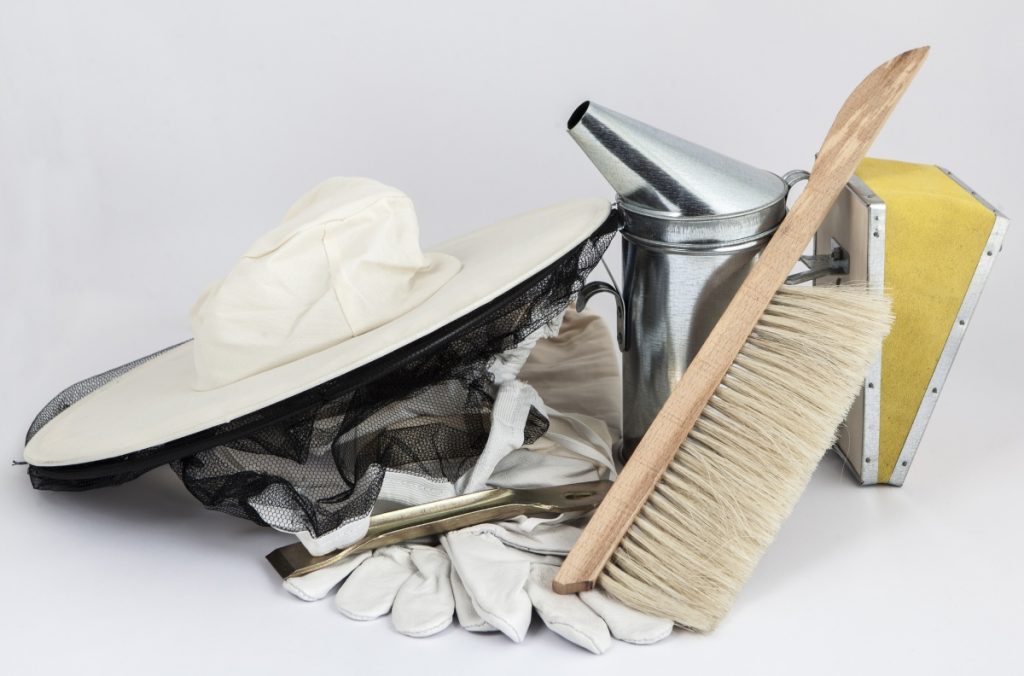
Start-Up Costs
The start-up costs for beekeeping are not very high compared to many other businesses and well worth it when you consider all the benefits of beekeeping and the potential profits.
Many of the initial items you buy will also last for many years.
Many experienced beekeepers advise new beekeepers to start with two hives in their first year.
Doing this provides an opportunity to fix many of the problems beginner beekeepers experience and increases the chance of getting at least one colony through the winter.
It is also easier for beginners to start with nucs instead of just a bee package, but this is slightly more expensive.
In general, depending on what type of equipment you buy and how you get your bees, the start-up costs will range between $400 and $650 (£290 to £470) for one beehive and around $300 (£215) for every additional beehive.
This amount covers the cost of buying beehives, safety equipment and bees, but you also need to consider the other miscellaneous expenses.
The cost of beekeeping for your first year with one hive is between $500 and $725 and includes:
- A complete hive with all components at between $150 to $275 (£108 to £198)
- A bee package at between $125 and $200 (£90 and £145) or nucs that range between $180 and $250 (£130 and £180)
- Protective gear at a range of $90 to $120 (£65 to £87) per person
- Basic tools for around $45 (£32)
- $75 (£54) for miscellaneous costs in your first year. Including mite treatments, sugar and pollen for feeding and books.
Beekeeping for newbies has more information on the starting costs of beekeeping in your first year with a handy cost estimator.
Maintenance Costs
Beekeeping maintenance costs are not high and will fluctuate from year to year depending on the weather, nectar supply and age of your hives.
Potential maintenance costs include painting and repairing hives, mite treatments for your bees, materials for winterizing the hives if required and sugar to feed your bees if there is a shortage of nectar.

Sales and Marketing Costs
If you plan to sell honey and other bee products, you will need to source packaging.
You will also need to take into consideration printing costs for labels and any promotional leaflets you make.
If you want to promote your services or sell products online, you will need a website and web hosting.
The rental of a stand at a farmers’ market also falls under your sales and marketing costs.
Lastly, don’t forget to include the costs of your time and labor.
Beekeeping Regulations
Before you begin beekeeping for profit, it’s important to research any regulatory requirements in your area.
To find out, search under “apiary license” or “beekeeping license.” on your local Department of Agriculture website.
You may also need to look at the local zoning or homeowners association regulations in your area.
Find answers to the questions below.
- Do you need to register your hives? Some states require every beehive to be registered and a permit for moving bees across state lines. An inspection may also be required.
- Do you need a business license to keep bees and sell bee products in your area?
- Do you need product liability insurance to start a beekeeping business in your area?
- Do the local zoning laws in your area allow beekeeping? If not, is there a suitable location nearby where you could set up your hives?
- Are their local regulations controlling the number of hives you are allowed on your property? If you are in an urban or suburban area, this may be a factor.
- Some areas may not permit you to establish a beekeeping business but will still allow beekeeping as a hobby.
- As a hobbyist, you may still be able to sell honey and other bee products. You would need to limit your sales to stay within the required parameters of a hobby activity.
- What information do you need to include on your honey label? Many states have specific regulations with regards to the information on a honey label. You are selling food for human consumption, which is why there is often regulation from state officials.
Pros and Cons of Beekeeping for Profit
Beekeeping for profit has many advantages not only for you but also for your garden and the environment. Here are a few of the pros of beekeeping.
Pros
1. Fresh Honey
Having an ongoing supply of natural raw honey is one of the biggest pros of beekeeping.
2. Useful Byproducts
Beeswax, pollen, propolis and royal jelly are all popular bee products that you can utilize or sell to generate profit.
Having such a wide range of potentially profitable products makes beekeeping an excellent choice for homesteaders who want to make their homestead profitable.
3. Improved Crop Yield
Honeybees play a significant role in the pollination of many fruit and vegetable crops.
Introducing a beehive to your garden or farm will increase the pollination rate and yield of your plants.
4. Low Maintenance
Bees are hard workers that don’t require constant monitoring.
A well-managed colony of healthy bees will produce honey and bee products without needing much from you.
On average, you could spend around an hour a week managing and maintaining your bee colony in summer, although they may need more assistance in winter.
5. Multiple Income Streams
Beekeeping provides several diverse opportunities for you to earn an income, not just by selling honey.
Having such a diverse range of options means you can appeal to a broad range of potential customers.
It also means you can experiment and find something you enjoy that is profitable.
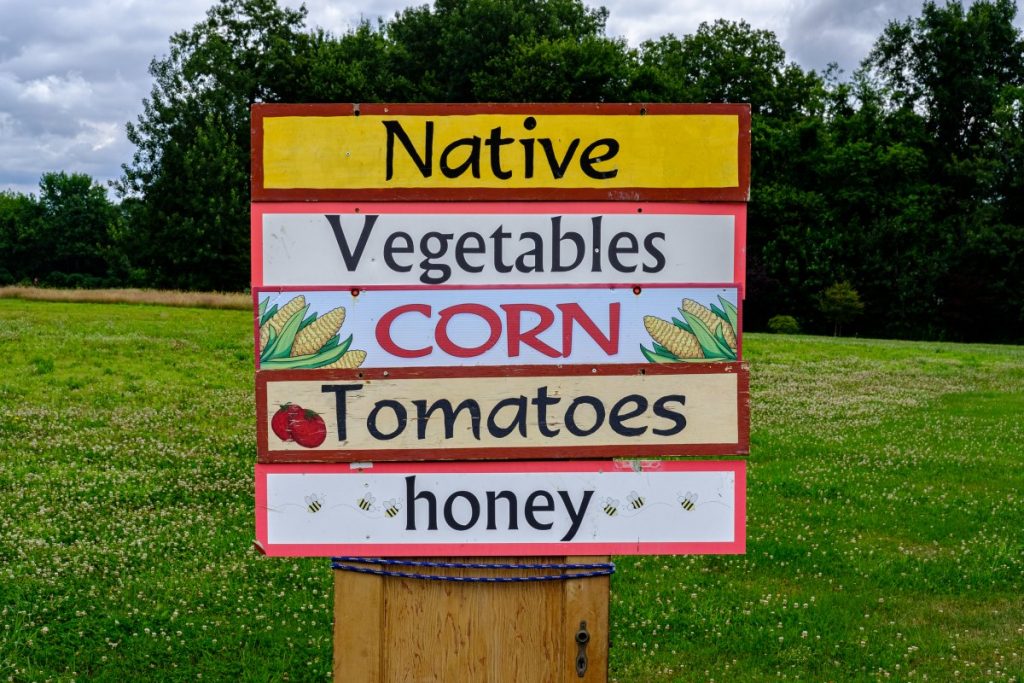
Cons
With all the pros, it’s hard to imagine why any homesteader wouldn’t start beekeeping for profit. However, as with most livestock, raising bees also has some cons to consider.
1. Start-up Costs
The initial cost of getting started can be intimidating, especially if you do not have money to spare.
2. Difficult First Year
The first year of beekeeping involves a steep learning curve, and you will usually not get any honey.
Be patient. Your bees have to do a lot of work in the first year to get established and store honey for winter.
3. Diseases
Bees are susceptible to pesticides, diseases and parasites, and it takes consistent, weekly monitoring and management to keep them healthy and productive.
It is a good idea to speak to other beekeepers in your area to find out what problems they have experienced and learn how to help your bees and keep them healthy.
4. Stings
Bee stings are painful, and if you’re allergic can be deadly.
However, bees don’t sting unless provoked. If you learn how to manage your hives properly and use proper safety procedures, stings will be rare.
5. Regulations
In some areas, there are regulations governing the raising of bees and selling of honey.
You may need to license your beehives or include specific information on your honey. Be sure to do your research before you begin beekeeping to avoid a potential fine.
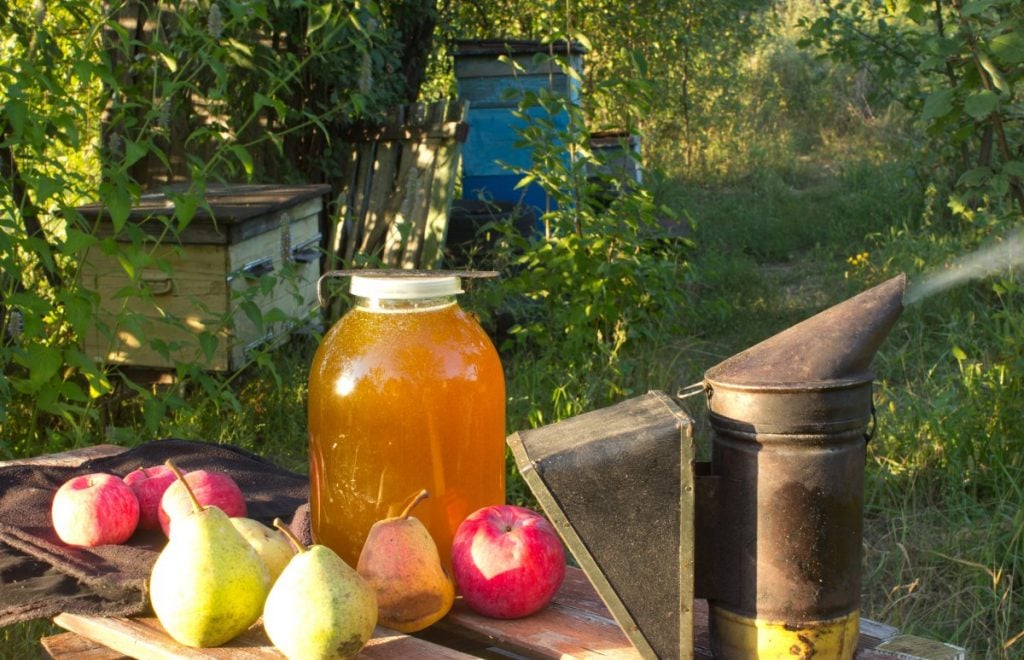
Final Thoughts
Beekeeping is ideal for homesteaders who want to increase their vegetable garden yields and earn money.
Start slowly, learn the craft of beekeeping and keep an open mind on how to make money as a beekeeper.
Explore all profitable beekeeping opportunities that come your way. A diversified approach is the key to being successful when beekeeping for a profit.
Discover more ideas on making money with your homestead in our article How to Make Money Homesteading: 48 Ways.
